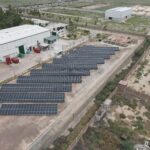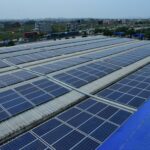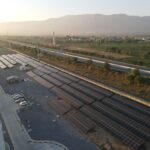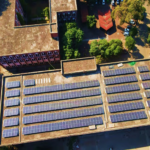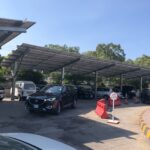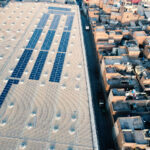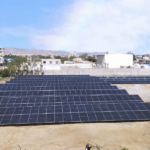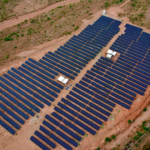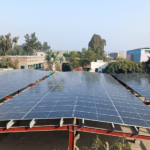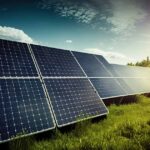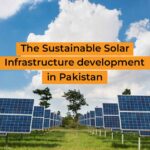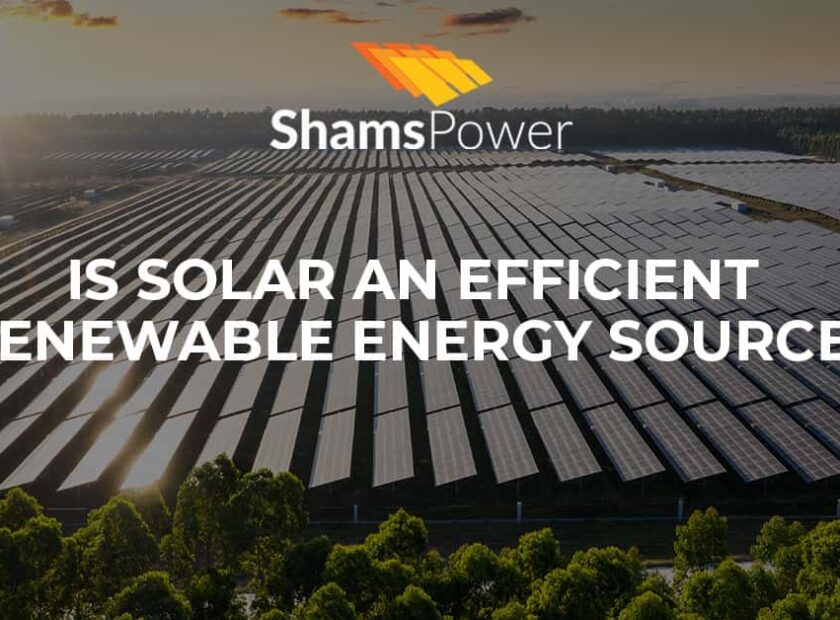Let’s determine which renewable energy source, solar or wind, holds the most significant promise for a sustainable future.
Pakistan’s Policy to Use Renewable Source
According to National Electric Power Regulatory Authority’s (NEPRA) 2022-2023 yearly report, Pakistan’s total installed power generation capacity is 43,775 MW, of which 59% of energy comes from thermal (fossil fuels), 25% from hydro, 7% from renewable (wind, solar and biomass), and 9% from nuclear.
However, The Government of Pakistan (GoP) is seeking initiative to pursue clean energy more effectively. Because of this, Pakistan has aimed to reduce greenhouse gas emissions by 50% by 2030.
Hence, Renewable energy (solar and wind) is becoming an essential part of Pakistan’s climate change strategy for reducing greenhouse gas emissions.
A comparison between solar and wind energy in Pakistan
Pakistan has made significant progress in solar power installation. It is peak under direct sunlight, but changeable weather might hamper the efficiency of solar panels. Whereas, Wind turbines may produce electricity continuously as long as there is wind, even on cloudy days.
Wind Energy
Pakistan’s coastal area, stretching 60km from Gharo to Keti Bandar and extending 180km, holds the potential to generate 50,000MW of electricity. Currently, there are 36 private wind projects in operation, generating around 1845MW of power. Additionally, the Government of Pakistan aims to derive 60% of the country’s energy from renewable sources by 2030 as per its renewable energy (RE) policy. This ambitious goal opens up numerous opportunities for the wind energy market in Pakistan.
Solar Energy
Pakistan’s solar installed capacity reached 1.24 GW by 2022, marking a 17% increase from 2021, with the government proposing initiatives to boost solar energy share. The Solar Energy Market in Pakistan is projected to grow at a CAGR of 49.68% from 2023 to 2028, reaching 9.77 gigatons. Balochistan province boasts significant solar and wind potentials, with 2,900 GW and 340 GW respectively, and the capacity to implement over 14 GW of renewable energy within 5-10 years, including large-scale PV plants. Its favorable geography and irradiance position Balochistan as one of Pakistan’s most promising provinces for renewables.
Economic situation
The economic balance can also shift in unexpected ways. With their enhanced efficiency and reasonable cost, solar panels are now more affordable for industries, business owners, and commercial sectors.
It needs more significant upfront investment and benefits from bigger operational scales. However, solar provider companies like Shams Power offer Solar Power Purchase Agreements to combat these issues, allowing the C&I sector to install Solar Systems without paying any upfront or investment cost.
Ground Accommodation
Considering solar energy, the land footprint can be significantly cost-effective and hassle-free if it comes under PPA or Solar Financing. Although wind turbines are tall, they take up much less space on ground level. However, the effect on birds and species of bats remains a significant worry.
At last, the advantage of both methods is their enormous scope for innovation and scalability. Simple roof installations can increase Solar footprint without occupying more land, while offshore turbines seriously consider tapping into significant oceanic winds, avoiding surface conflicts.
The future of Renewable energy in Pakistan
In conclusion, projecting the path of solar energy against wind energy is a complex task. It is about comprehending a complicated patchwork of technological, policy, and societal requirements. Technological developments could soon change the odds in favor of one option.
Government policies will likely play an essential part in the battle over solar vs wind energy. It also emphasizes the importance of politics in the solar energy vs wind energy environment. Pakistan aims to lower emissions of carbon in the coming years. This will continue to drive investment in renewables at commercial and industrial levels. This policy will favor one energy source over another and could change the dynamic, resulting in faster development and research in the industry.
Adoption of renewable energy in C&I sector
Renewable energy is not simply a theoretical idea for commercial industries in Pakistan; it is a change that will affect their day-to-day existence. Industries are transforming into tiny power plants using the sun to power their rooftops and backyards. Similarly, community projects can take off with a joint investment in nearby wind turbines or solar farms.
Therefore, remember that diversity is the true winner when determining which form of energy is “better,” whether solar or wind. A robust and sustainable future may result from a well-balanced energy portfolio that capitalizes on both advantages. To save our world for future generations, inventors, policymakers, and, most importantly, knowledgeable industrialist must promote the development of a robust renewable energy matrix.
Contact us
Are you ready to help create a sustainable future? Contact us to discover how sustainable solar energy solutions might help you make a difference.[/vc_column_text][/vc_column][/vc_row]



